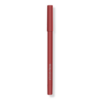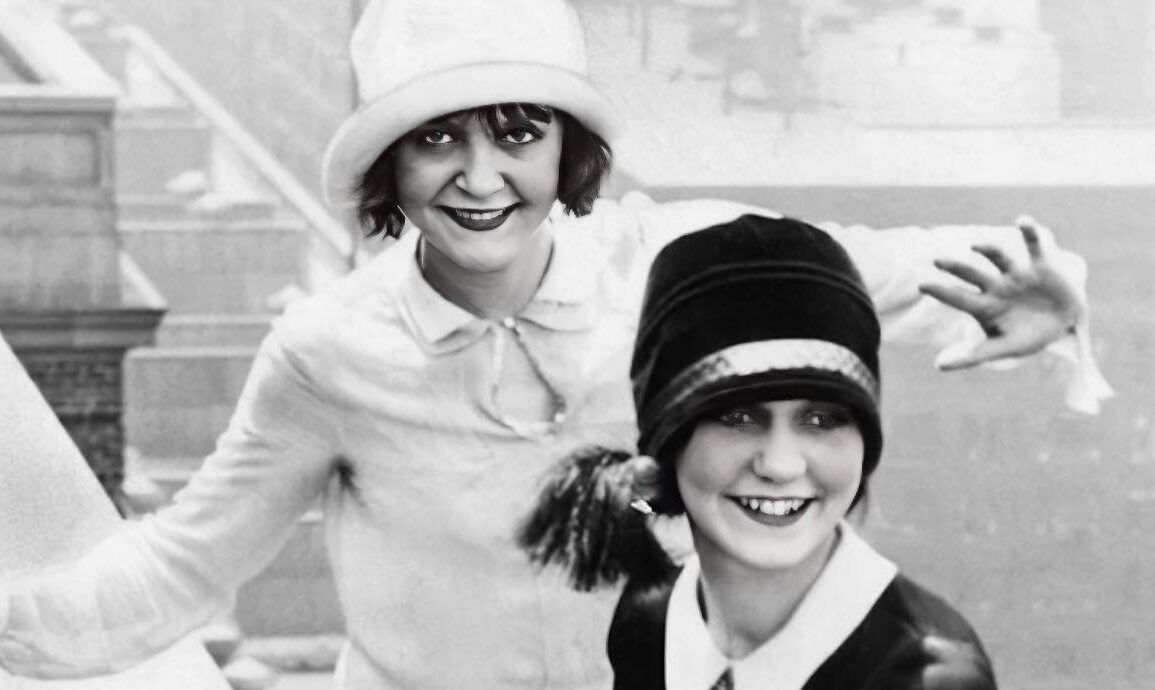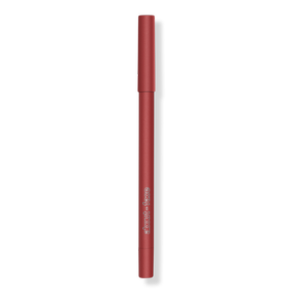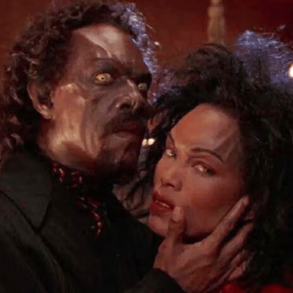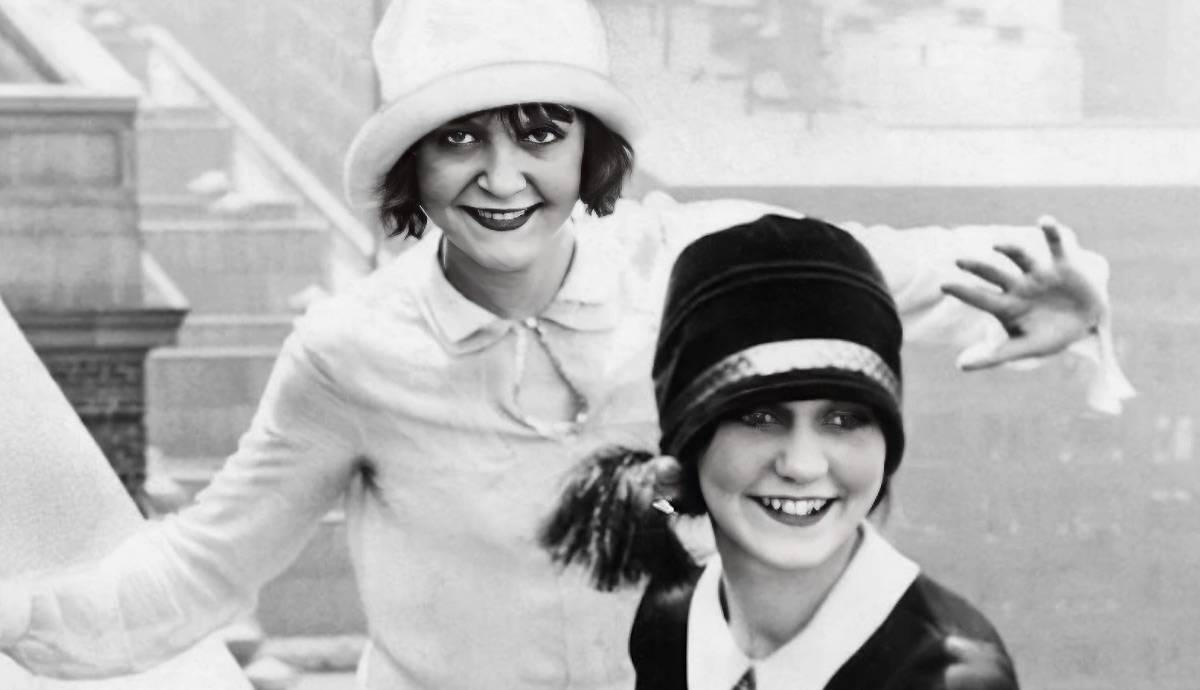
The Flapper was born from a culmination of events after the First World War. While men were away at war, women got a taste of the freedom of working outside the house. They were reluctant to give away this independence, evident in the passing of the 19th Amendment, which gave women the right to vote, in 1920, and the proposal of the Equal Rights Amendment in 1923. The idea of the 1920s Flapper was based on women’s independence and was displayed through many mediums: hairstyles, fashion, and makeup–the most integral among them.
History & Beginnings of the 1920s Flapper
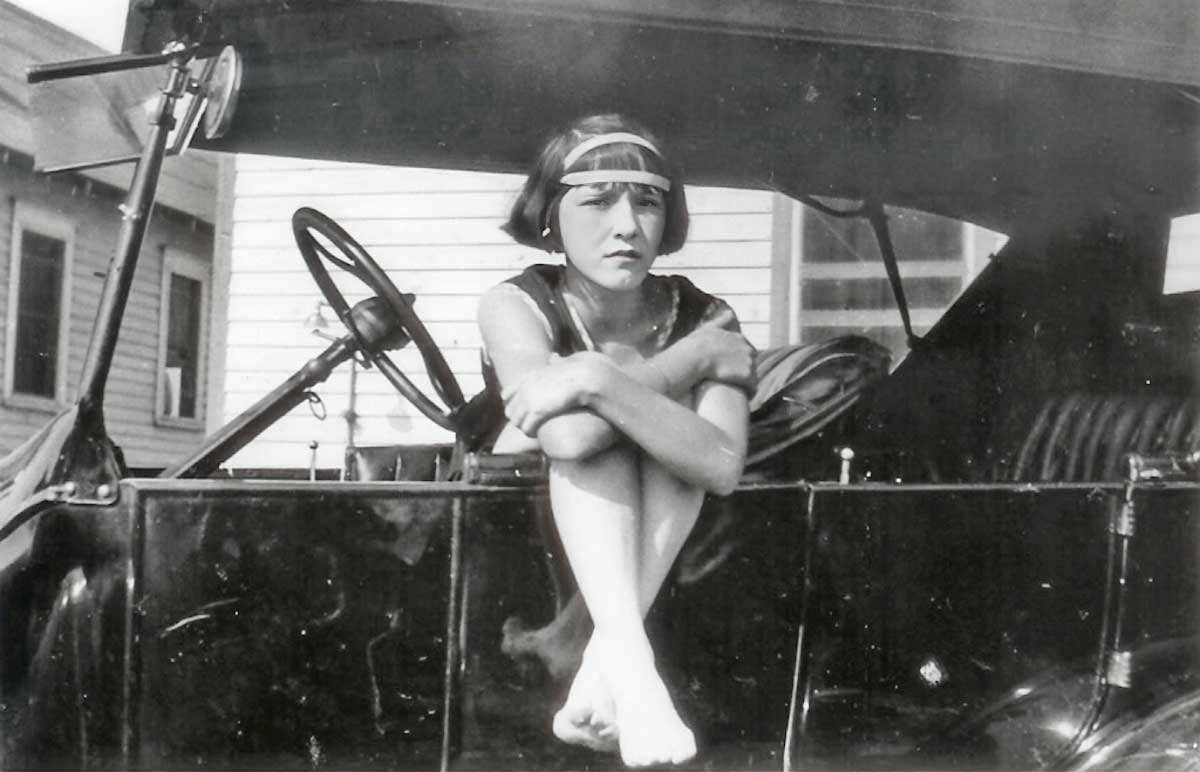
The 1920s saw mobility for women that had never before been possible. Women could drive, they could work, and they could go to speakeasies. This increased mobility led to the Jazz Age ideal of a free and independent spirit. Women began expressing this through their style and through the way they lived. Thus, the flapper lifestyle was born.
The word flapper has existed in some form since the 16th century. The etymology is simple in its most basic form: it describes something that flaps. By the mid-1700s, this term most often referred to a duckling attempting to fly. These fledgling ducks were labeled flappers for the way their wings moved.
This definition describes precisely the goal of the lifestyle young women of the 1920s popularized. In the July 23rd, 1922 edition of the New York Tribune, a column uses the definition to say just that: “the term was applied to a young duck which tried to fly. Here, evidently, is the maternal grandmother of the would-be high-flying flapper of today – and of tonight.”
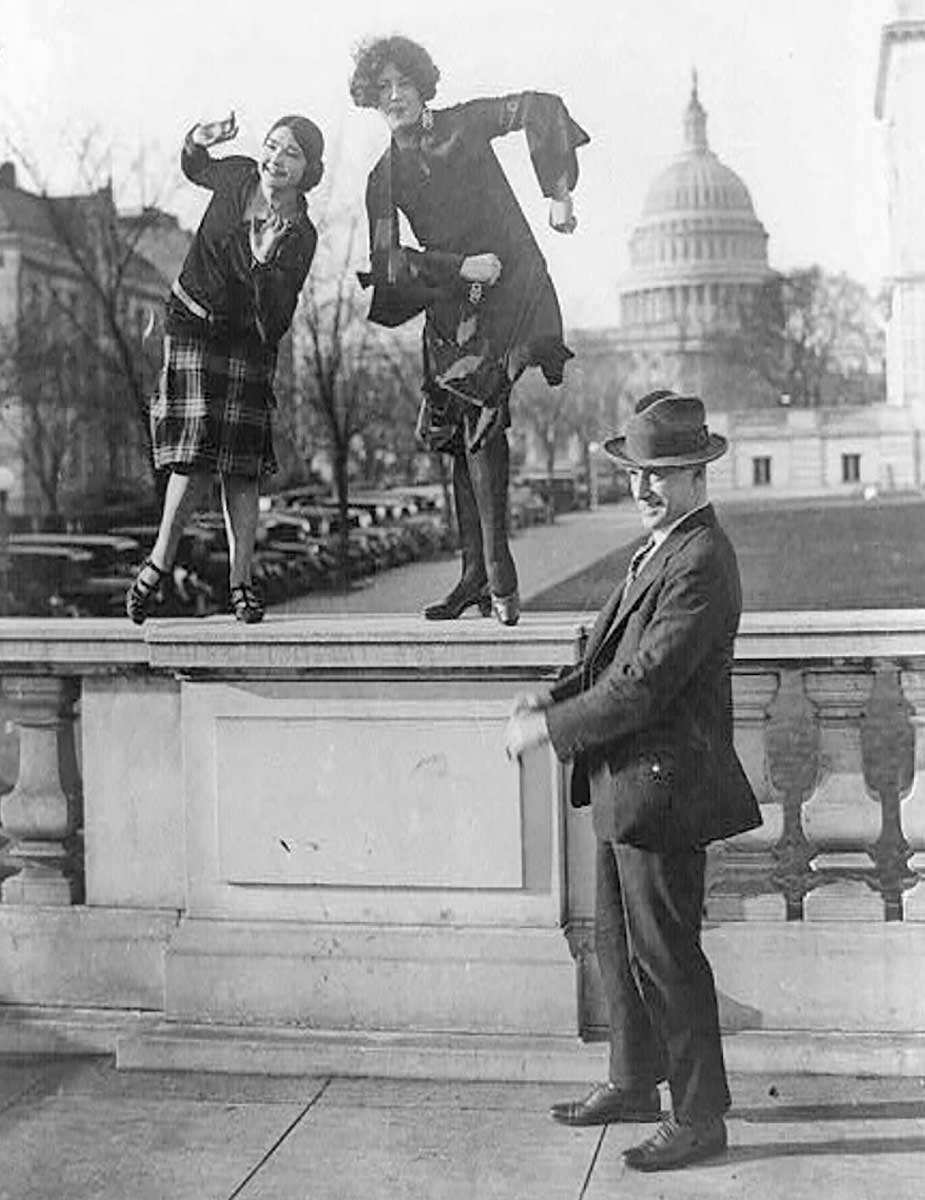
Get the latest articles delivered to your inbox
Sign up to our Free Weekly Newsletter
They were ducklings forging their path, flapping themselves out of the role built for women and into new territory. This, of course, did not agree with many people, especially older generations. Women were used to being seen and not heard, but the new generation’s voices disturbed the antiquated order of things.
It was seen as improper for a woman to smoke, drink, sing, dance, or laugh in public. Flappers did all of this. The mentality behind being a flapper is best described by the flappers, as in 1922 when Zelda Fitzgerald wrote “Eulogy on the Flapper.” In it, she describes the meaning behind the life of the flapper:
“The Flapper awoke from her lethargy of sub-deb-ism, bobbed her hair, put on her choicest pair of earrings and a great deal of audacity and rouge, and went into the battle. She flirted because it was fun to flirt and wore a one-piece bathing suit because she had a good figure; she covered her face with powder and paint because she didn’t need it and she refused to be bored chiefly because she wasn’t boring. She was conscious that the things she did were the things she had always wanted to do. Mothers disapproved of their sons taking the Flapper to dances, to teas, to swim and most of all, to heart. She had mostly masculine friends, but youth does not need friends—it needs only crowds.”
The look of the flapper was integral to the attitude of the flapper. The look provided boldness and ferocity in the face of gender norms of the time. These parameters set the stage for the aesthetic that soon began to dominate the culture of the United States.
Fashion & Artistic Influences
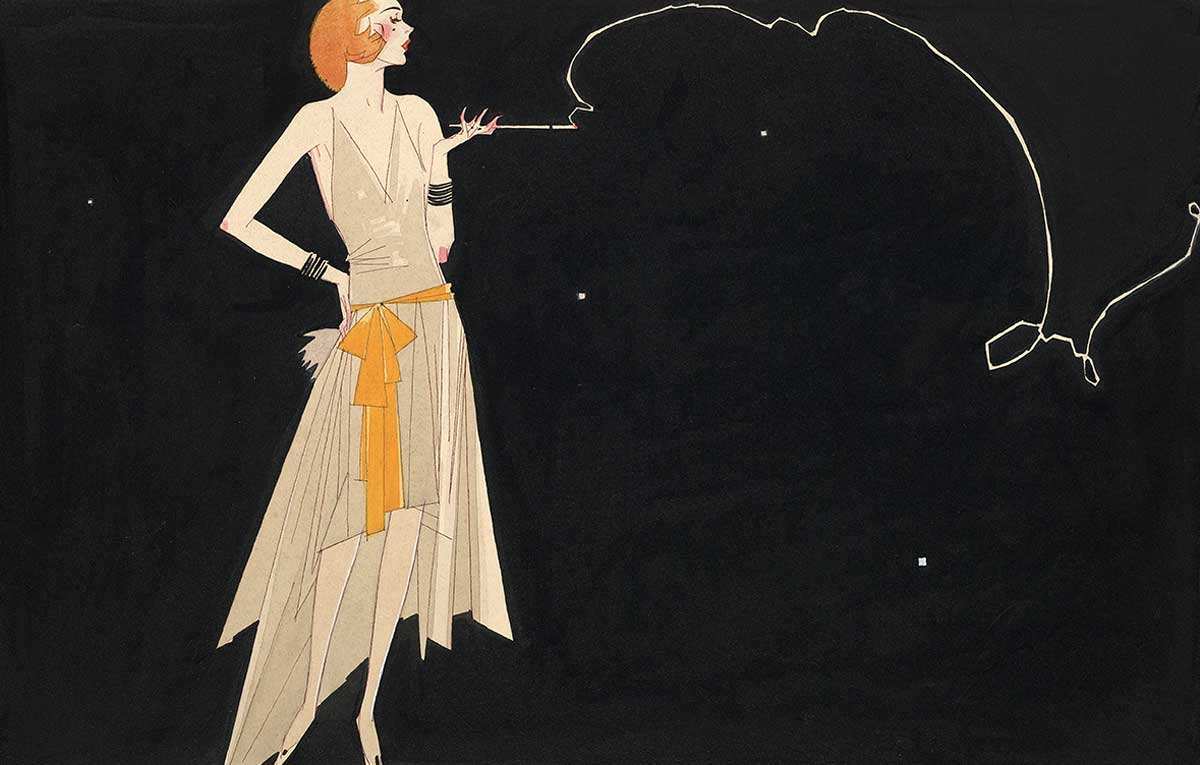
It is easier to look at the fashions of the 1920s by first acknowledging the fine art movement of Cubism at the time. In the paintings of the likes of Pablo Picasso and Fernand Leger, the straight lines, geometric forms, and rigid figures inspired the haute couture of the time.
Designers that particularly influenced the flapper aesthetic include Jean Patou, the inventor of the flapper silhouette. In general, Patou promoted the figure of the flapper in his elevation of sportswear and swimwear for women. In creating the straight form out of clothing, he left women with more androgynous bodies, devoid of the curves provided by corsets. Patou propagated the idea that women could both be free to move about and to be stylish while doing it.
Coco Chanel was another significant influence on the flapper look. She coined the little black dress, the sunkissed look, and the integration of clean lines into her clothing. Her styles arrived in the United States in the early 1920s and took off. Conversely, designer Jeanne Lanvin appealed to the flapper aesthetic through her beading work and intricate hemlines.
The style of the flapper built their lifestyle, which is apparent when we now look at the artists and designers of the era. Bolstering the independence of women was the art scene, which was also moving away from traditional ideas of beauty.
The Makeup of the Flapper
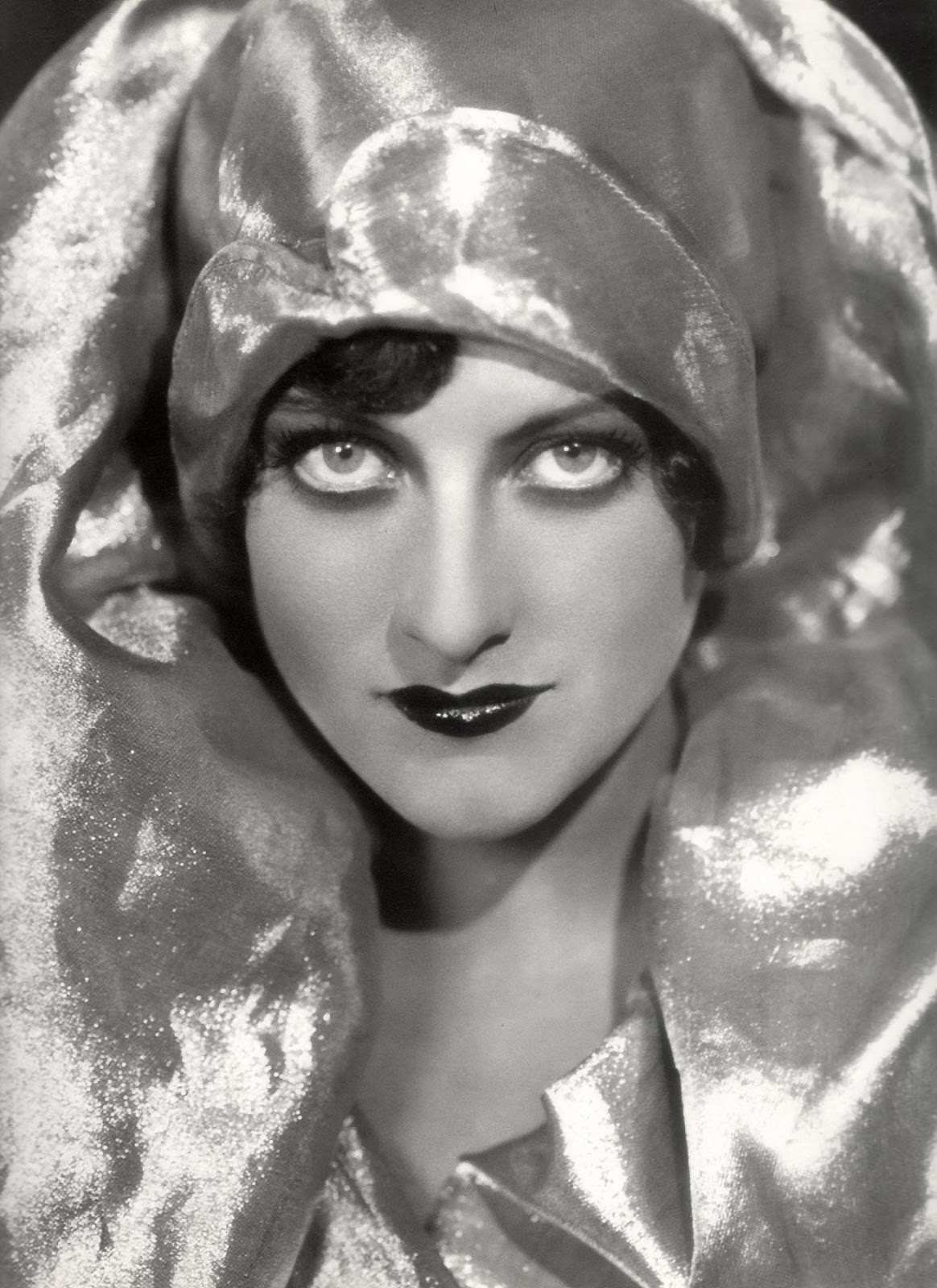
Bruce Bliven, describing the makeup of a flapper in his story for The New Republic, said,
“She is frankly, heavily made up, not to imitate nature, but for an altogether artificial effect—pallor Mortis, poisonously scarlet lips, richly ringed eyes—the latter looking not so much debauched (which is the intention) as diabetic.”
Bliven’s evaluation of the flapper makeup style harkened back to the ideals before the 1920s. The “Gibson Girl,” as the pre-World War I style of beauty was called, was a more natural aesthetic. Before the 1920s, makeup was not easily accessible or applicable, and natural beauty was valued above all else. Women who needed to make themselves up were messing with nature, but this was, in essence, the goal of the flapper in the first place.
Makeup was another arena in which the 1920s flappers could differentiate themselves. It was another tool for asserting independence. Makeup was, as Blivens put, not made to enhance the natural look. This makeup subverted the classic idea of beauty. This was the goal in all facets of the flapper lifestyle. Makeup was also made more accessible with the introduction of rouge, which became more socially acceptable with its increased convenience through compacts. So did lipstick with the invention of the retractable tube in 1915. Powder additionally became safer to use and thus increased its popularity among women.
Women painted their nails, lined their lips, and rouged their cheeks with red color. This stood in stark contrast to their pale skin and their kohl-lined eyes. The aim was to look different, to leave the mores of the past behind. An essential factor in building this look was the innovation in the cosmetic industry at the time.
So Long to Long Hair
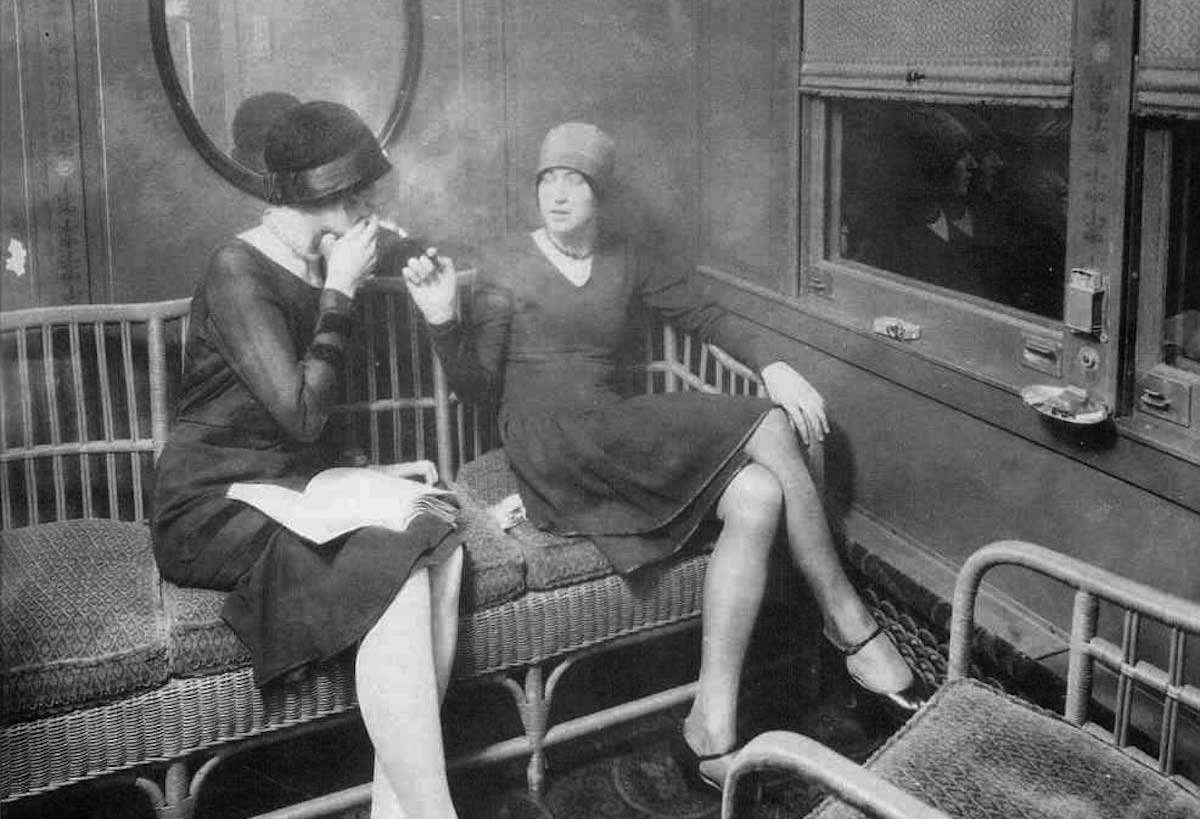
Another trademark of the Gibson Girl had been her long tresses. Short hair had never even been considered for women. However, the introduction of women in the workplace and the increasing numbers of women on the go necessitated a change in hair maintenance. Thus, the bob was introduced.
Aesthetically, the bob moved toward the androgyny that flappers in the 1920s craved. When hairdressers could not comply with this controversial request, women took their business instead to barbers, who shored their hair into the cropped look.
The bob became fashionable when ballroom dancer Irene Castle cut her hair out of convenience. Flappers, wanting their look to rebel against any antiquated ideas of femininity, flocked to the style. The bob came in many types, namely the finger wave, the Eton crop, the shingle bob, and the Marcel, which utilized the newly invented curling iron.
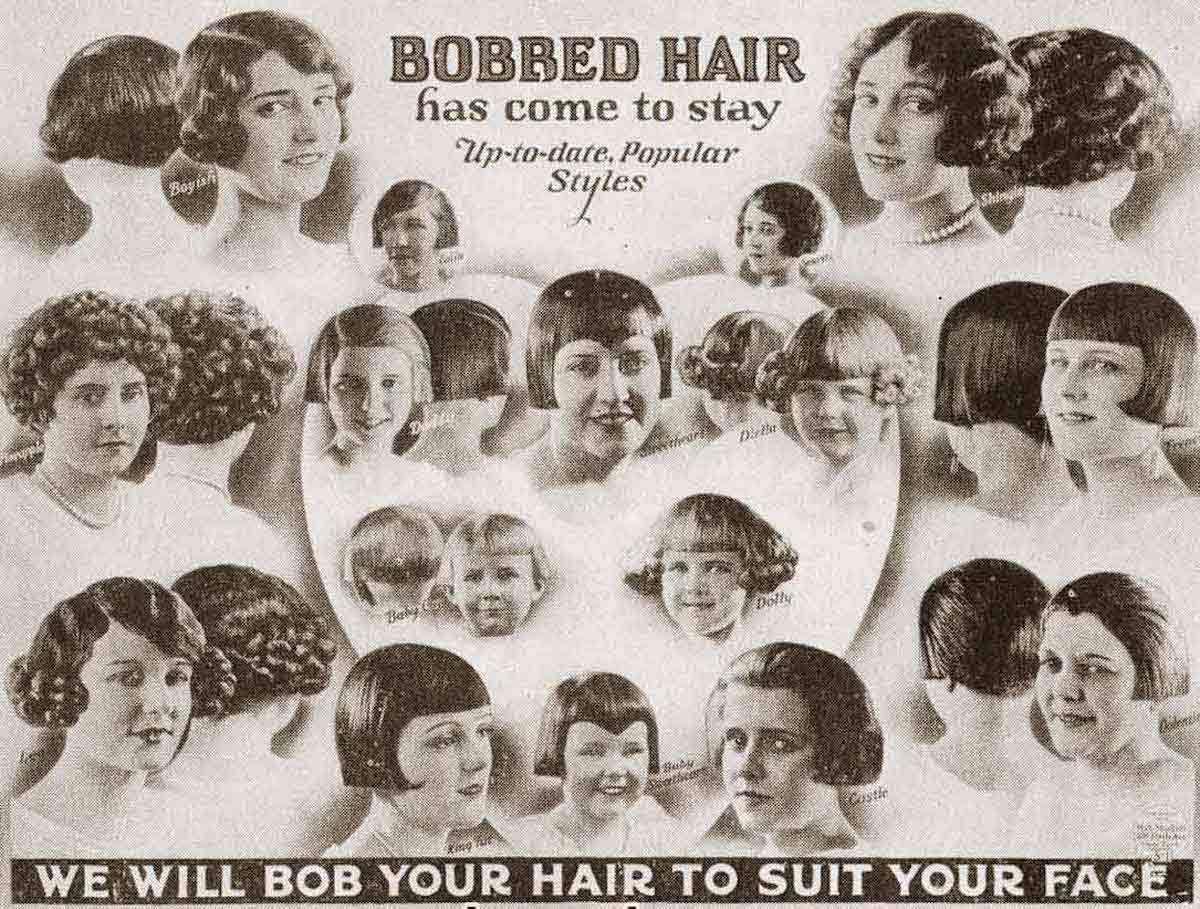
These hairstyles were coupled with close-fitting hats called cloches, as well as bobby pins and headbands usually worn over the forehead. Even flappers with the same bob could style it in a way that preserved their independence. Like makeup, the look made the woman. With the flapper’s hairstyle came their push for freedom and individuality. They would be heard, and with this look, they would also be seen.
Flapper-Style Clothing
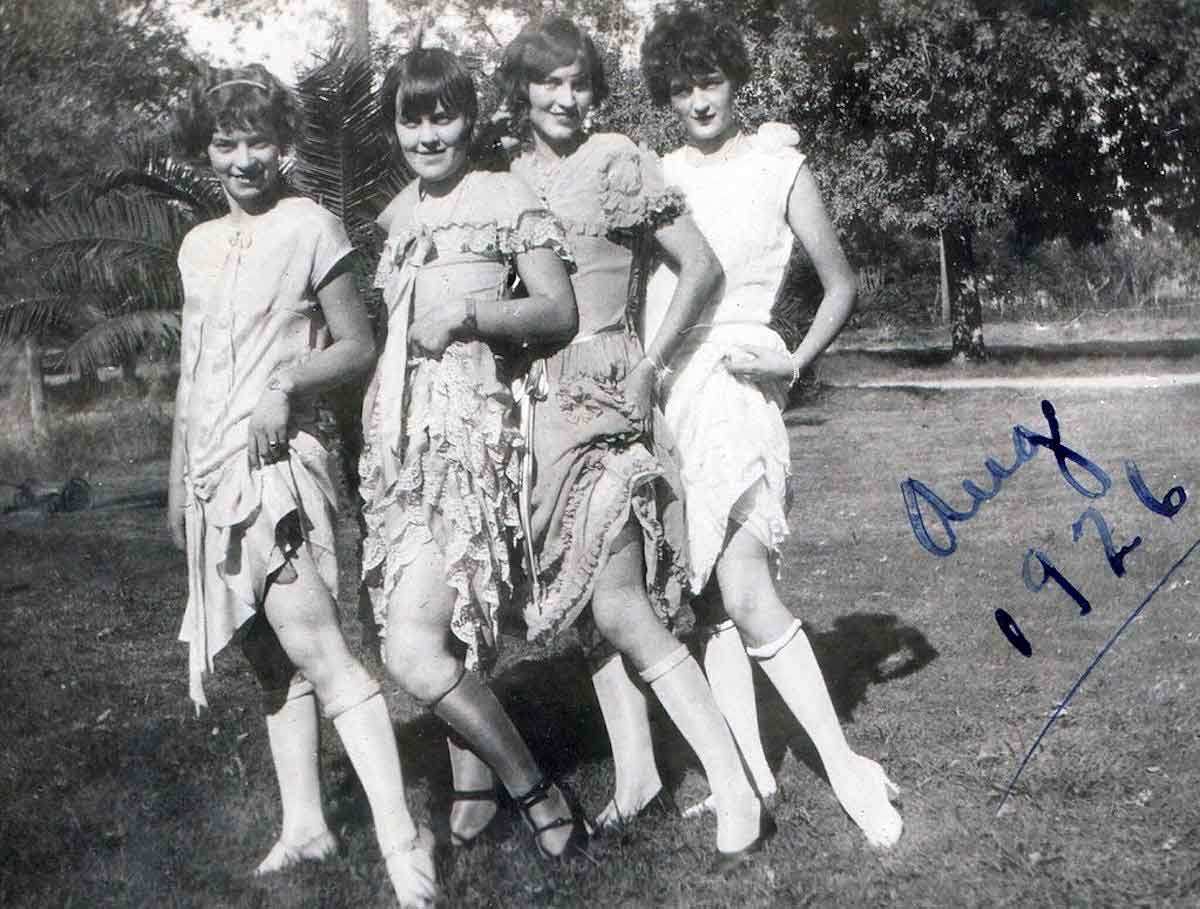
The most characteristic element of the flapper’s clothing was the raised hemline. Instead of coming to the ankle, flapper dresses came to below their knees. The dresses were not made to enhance the wearer’s body. Frankly, the opposite effect was achieved.
Gone were the corsets of the Edwardian era, which defined every curve on a woman’s body. The dress of the flapper was angular, essentially a rectangle. It was straight and worn with undergarments that flattened the woman’s curves. Undergarments were made to be shaped into straight lines, not to enhance the body. Flappers did not wear garters on their stockings; they rolled them, exposing their knees, a move considered scandalous for the time.
Where the shape of their clothing made the wearer more androgynous, the color of the garments had the opposite effect. Beads, sequins, metallic thread, scarves, and, most importantly, color came into play. The dress was intended to be a moving show upon its wearer, enhanced by dancing. The silk, organza, and chiffon that the dresses were made from only emphasized the fluid quality of the woman. So too, did the lack of sleeves. The fashion of the flapper age was all about freedom of movement and decadence of style.
The flapper once again used her appearance to make a statement: she could and would wear anything she wanted, and she could and would do anything.
What Made 1920s Flappers Different?
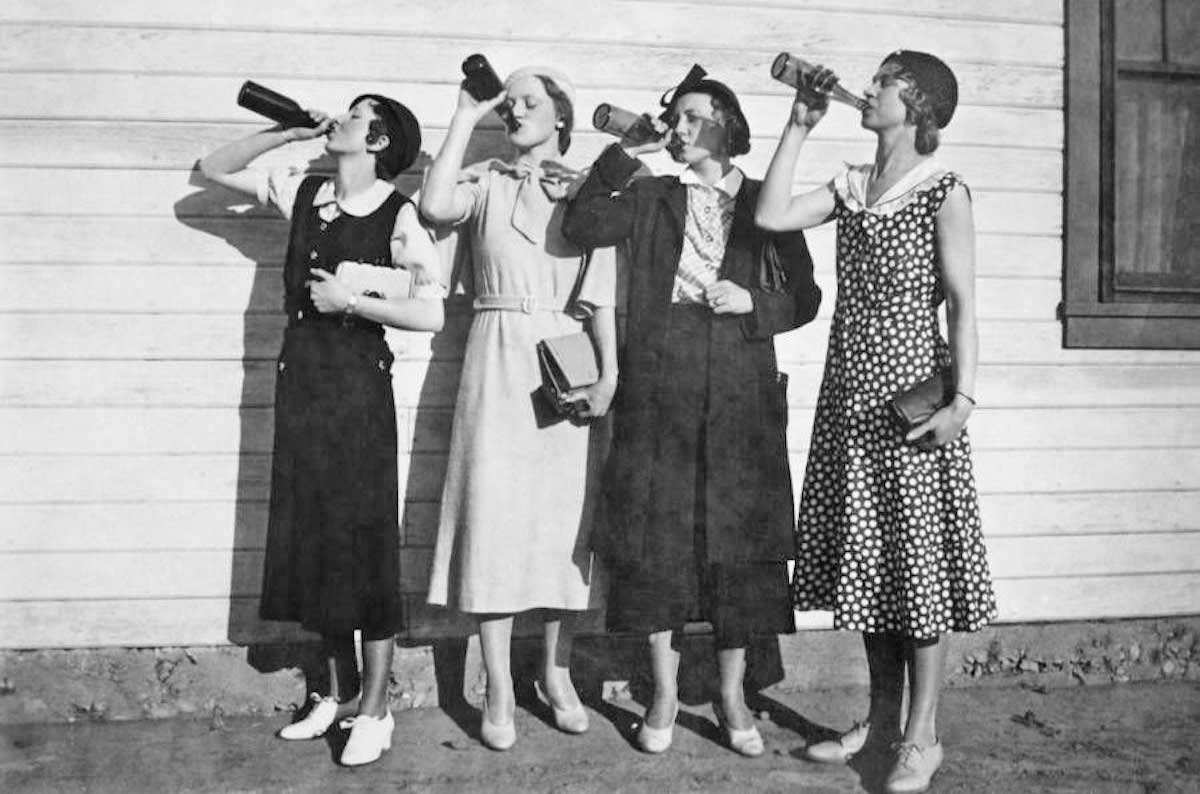
The flapper was the embodiment of the new woman. The aesthetic of these women influenced the burgeoning independence and rebellion they felt. Gone were the days when women were relegated to the house. Flappers were the images of the free spirit of the Jazz Age. Women like Zelda Fitzgerald, Clara Bow, Louise Brooks, and Colleen Moore helped establish their sex as equals.
Flapper aesthetics started as taboo. They went against the grain of anything a woman had ever been. By the end of the 1920s, the flapper style was the mainstream style in the United States. The Sears catalogs featured women with bobbed hair, and the little black dress had permeated farms in Iowa. With the popularity of this style came the inkling that women felt more comfortable asserting themselves and their place in the world.
The flapper movement died with the economy in the 1929 Stock Market Crash. The Great Depression forced style back to austerity. Simple dresses and simple fabrics were once again the norms. No one could afford anything else. It made sense that the frivolity of the Jazz Age had to be left behind.
However, the mentality of the flapper could not be switched off. It set the stage for women of future generations to fight for their rights and speak up for themselves. The flapper made room at the table for the modern woman, who couldn’t be put out of sight with sparkling dresses and red lipstick.
This post was originally published on this site be sure to check out more of their content.

